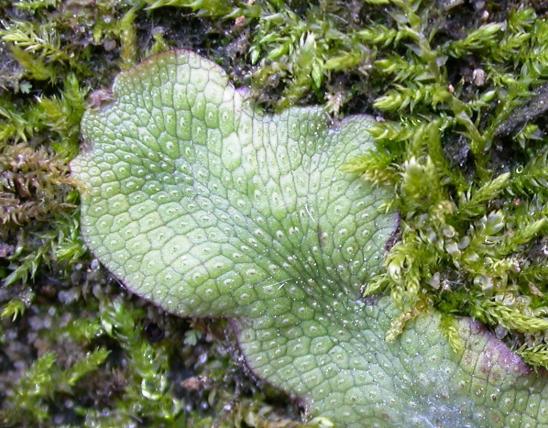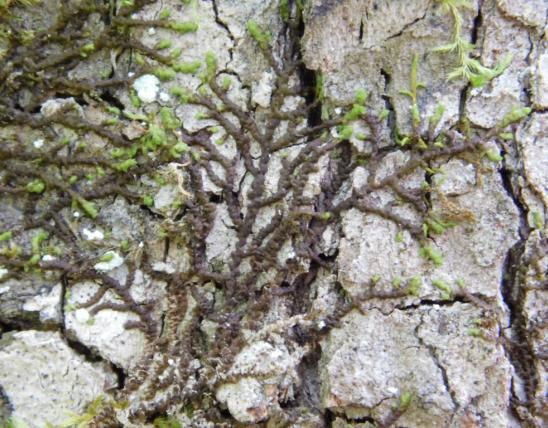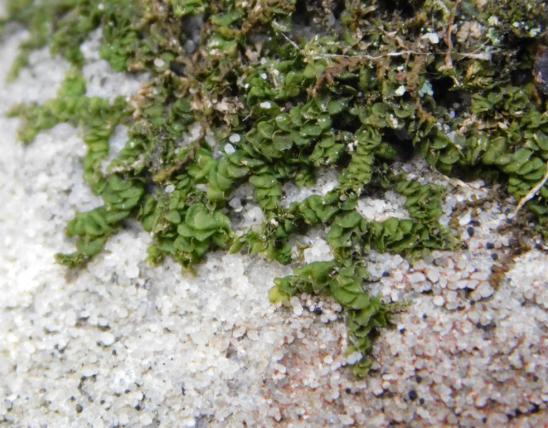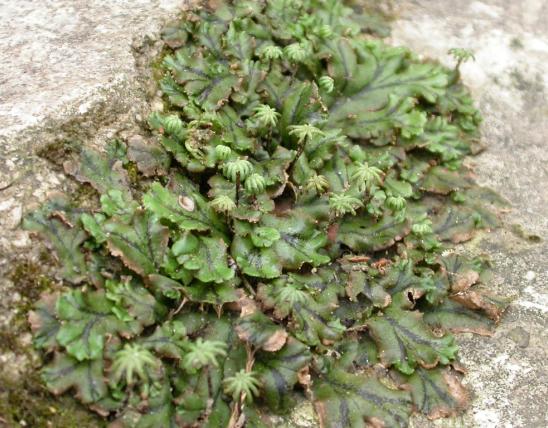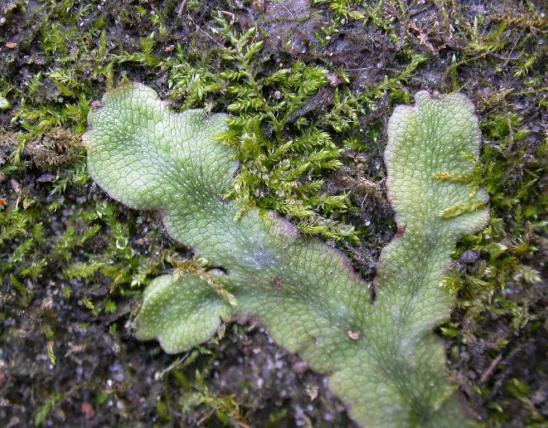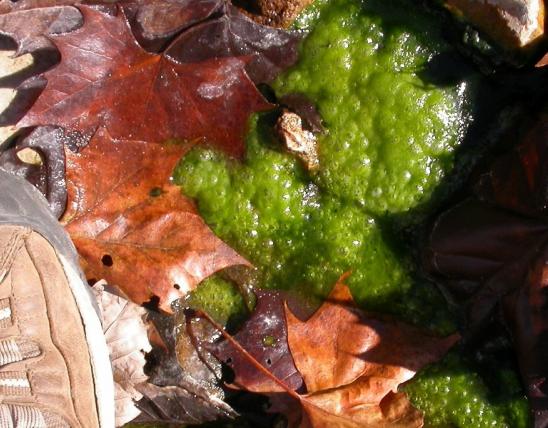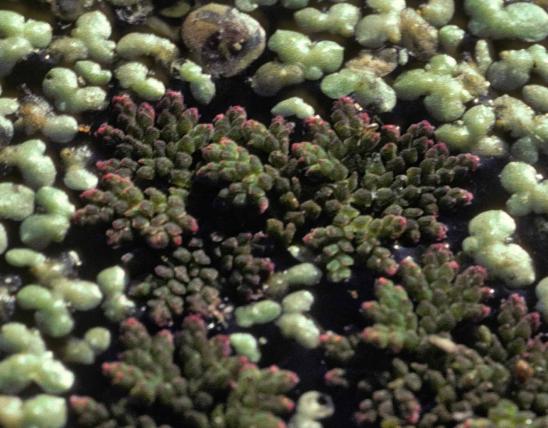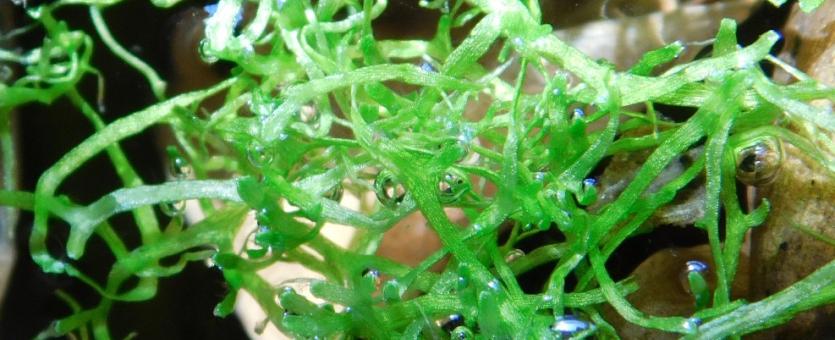
Floating crystalwort, or slender riccia, is a type of liverwort that floats in lakes, ponds, and streams, forming dense, tangled, bright yellowish-green mats in shallow water. Although this is a thallose (ribbonlike) liverwort, it hardly resembles its relatively large, fleshy relatives such as the well-known snakeskin or umbrella liverworts. In floating crystalwort, the thallus (main body) is long, slender, and flat. These flattened green threads branch profusely, with each branch ending in a notch. Tiny air chambers in the thallus help it to float.
This species also sometimes occurs as a terrestrial (land) plant, usually along the moist edges of ponds or wetlands. In this case, it takes a slightly different form, with the thallus branches slightly wider and more likely to be notched at the tips.
Thallose, or thalloid liverworts are the form of liverworts most people are familiar with. They typically look like green ribbons or scales that grow flat against a surface. This ribbonlike part of the plant is called the thallus. If the thallus branches, it does so in a Y-shaped pattern. There are no clearly defined stems or leaves. In this species, the flattened branches are quite narrow, and they form three-dimensional masses floating in water.
Learn more about liverworts on their group page.
Similar species: Approximately 18 species of Riccia have been recorded for Missouri, but this — one of the few floating species — is most common and widespread. The others generally resemble smaller versions of our more common thallose liverworts such as the familiar umbrella and snakeskin liverworts.
Fringed heartwort (Ricciocarpos natans) is in the same family and has a fairly widespread distribution in the state. Like floating crystalwort, it can be a floating aquatic or a terrestrial plant (usually stranded on land by receding water). The two often occur together, but you won’t mistake heartwort for floating crystalwort, which is smaller and thinner. Heartwort’s wider, Y-shaped, leaflike thalli often look like a floating green heart, or a fan composed of two heart-shapes joined at their tips. Numerous flat, translucent, elongated, brownish or purplish scales dangle from the underside of plants floating in water. On land, heartwort forms rosettes to about 1½ inches in diameter; young specimens can look something like yellowish-green snowflakes.
Thallus width: less than 1 mm.
Statewide. Occurs globally.
Habitat and Conservation
Floating crystalwort typically grows just under the water surface in ponds, wetlands, and other places with calm water. Its many interwoven branches can get caught on other objects, causing the mass of crystalwort to become attached in a single place.
It also occurs in a more terrestrial form, especially when a receding water line strands the mass of crystalwort along a shore.
Status
One of the more common Riccia species. Often sold in pet stores for use in aquariums.
Life Cycle
The liverworts we usually see are only one part of a two-part life cycle. This conspicuous part of the cycle, called the gametophyte (gamete-bearing plant), typically produces female and male reproductive structures that produce eggs and sperm. However, sexual reproduction is rare in this species. Instead, floating crystalwort reproduces and spreads vegetatively, by fragments breaking off and starting new colonies.
In winter, floating crystalwort survives in the form of tiny branch tips, which start growing into new colonies in spring. By late summer and fall, they have reached their maximum size.
Human Connections
Floating crystalwort is frequently sold in pet stores. Aquarists use it, especially in fish breeding tanks where its delicate, light green floating masses provide cover for young fry. It also diffuses the light somewhat, making many kinds of fish more comfortable and colorful. If you have a fish tank, you might easily acquire a tiny start of this liverwort by accident, if a fragment of it is included with the water when you purchase a fish.
- Keep in mind that it’s never okay to release aquarium plants, fish, or other animals into natural waters.
The genus name, Riccia, can be pronounced RICK-ee-uh or RICK-see-uh (in English). It honors the 18th-century Florentine botanist and politician Pietro Francisco Ricci. A more Italian pronunciation would be more like h’DEE-chee-uh. Interestingly, this species was not originally placed in this genus.
Ecosystem Connections
Floating crystalwort, with other floating aquatic plants such as duckweed, provide shade and cover for aquatic animals such as insects and small fish.
Because it grows easily from cuttings, this plant is readily transported to new aquatic habitats by flooding events or by being attached to animals such as the feathers of waterfowl or the fur of mammals.
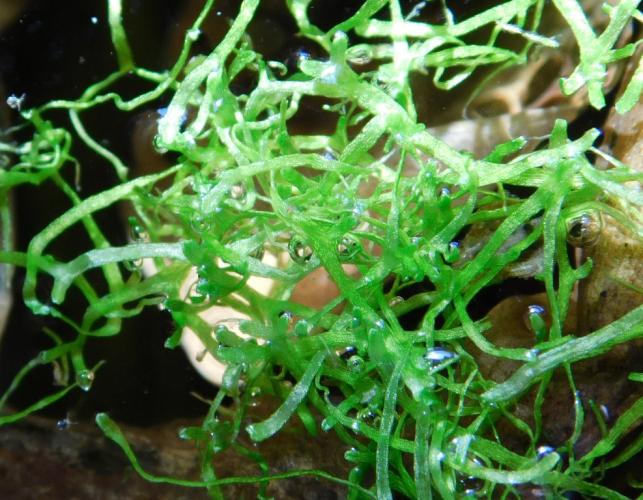
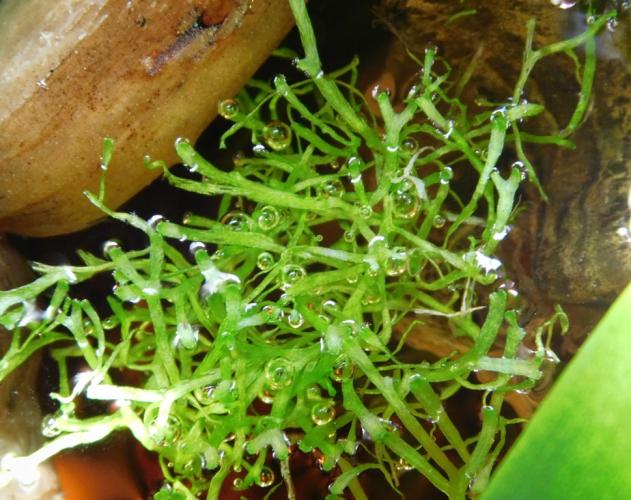
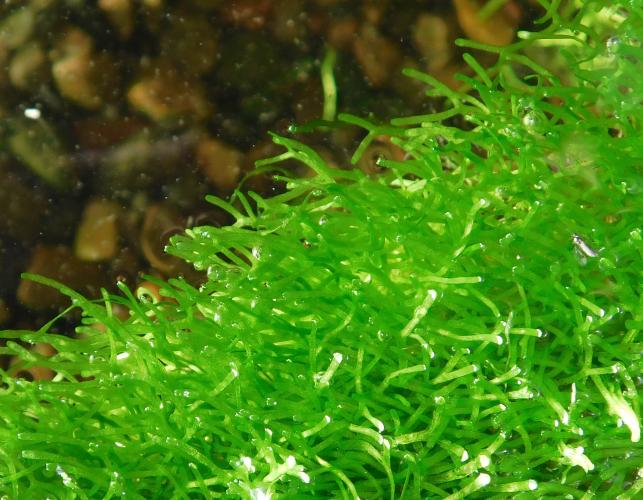
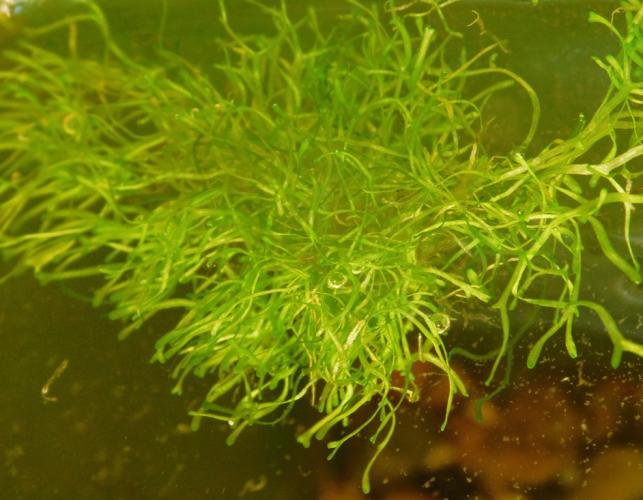
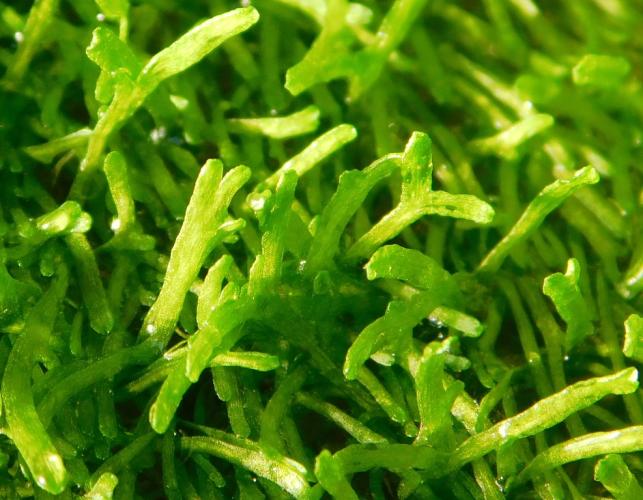
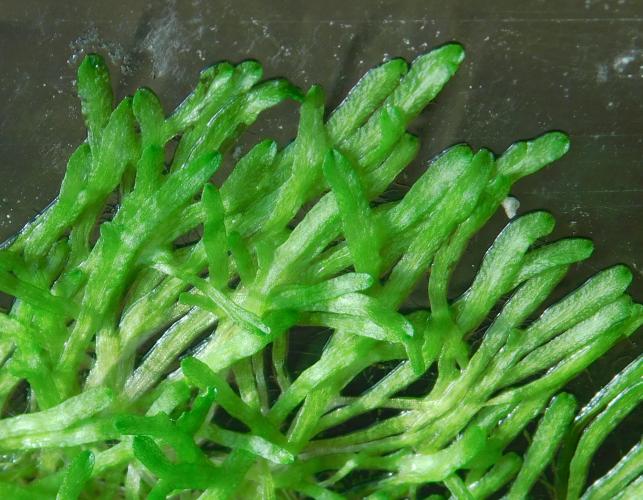
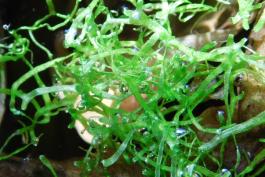
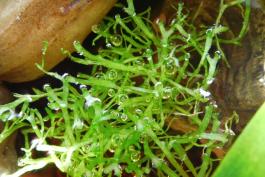
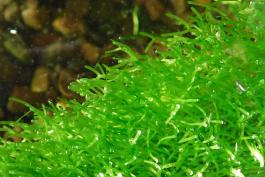
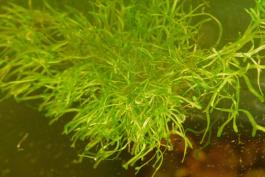
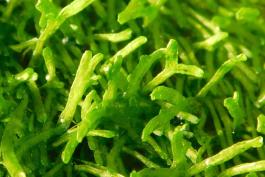
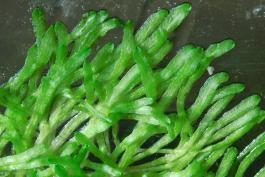
Mosses, liverworts, hornworts, and lichens seem rather similar, but these organisms are in very different groups. Mosses, liverworts, and hornworts are small, low plants usually found in damp habitats. Unlike more familiar plants, they lack veinlike structures and do not produce flowers or seeds — instead, they produce spores. Meanwhile, lichens are not plants at all: they are a collection of different fungi that have photosynthetic algae living within their tissues.






















